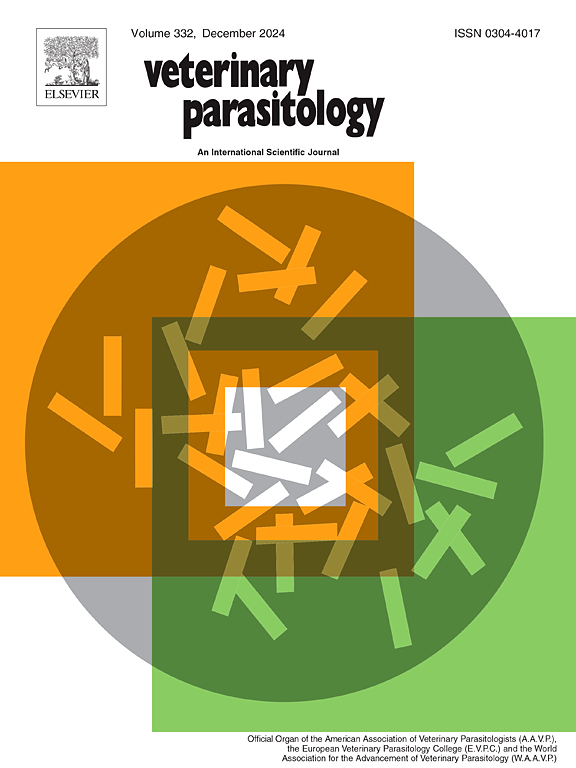Ecological niche and distribution patterns of snails that host Fasciola hepatica across South America: Unveiling the hidden landscapes
IF 2.2
2区 农林科学
Q2 PARASITOLOGY
引用次数: 0
Abstract
In South America, Pseudosuccinea columella, Galba cubensis, Galba schirazensis, and Galba truncatula snails serve as vectors of Fasciola hepatica, posing significant challenges to public and animal health. This study identified environmentally suitable areas for these species using ecological niche models, including Maxent, Random Forest, and Support Vector Machine (SVM) models. Occurrence points (n = 797) were compiled from the international literature, following the PRISMA protocol, and the malacological collection of the FIOCRUZ Institute in Rio de Janeiro, Brazil. P. columella (51 %) and G. truncatula (18 %) had the highest records. The distribution of Pseudosuccinea columella and G. cubensis was influenced by precipitation, exhibiting a broad potential across South America. In contrast, the distribution of G. schirazensis and G. truncatula was influenced by temperature and was limited to high-altitude areas. An ecological niche overlap was observed between P. columella and G. cubensis and G. schirazensis and G. truncatula. Moreover, suitable areas for these species were identified in Argentina, Peru, Bolivia, and Brazil. In Brazil, P. columella has demonstrated significant environmental suitability in the Cerrado and Amazon Forest biomes, which have been impacted by land-use changes, including pasture expansion and deforestation resulting from unsupervised cattle production. Therefore, predicting the contamination of new areas is critical to mitigate future liver fluke infections in suitable hosts (natives and rural communities, capybaras, etc.) from regions affected by large livestock movements on the continent. As we face climate change threats to vector-borne diseases, these modeling data highlight the need for significant preventive strategies aimed at the welfare and social impact of all South American countries.
整个南美洲携带肝片吸虫的蜗牛的生态位和分布模式:揭开隐藏的景观
在南美洲,小冠伪琥珀螺(Pseudosuccinea columella)、古巴加尔巴(Galba cubensis)、血吸虫加尔巴(Galba schirazensis)和截尾加尔巴(Galba truncatula)蜗牛是肝片形吸虫的媒介,对公众和动物卫生构成重大挑战。利用生态位模型,包括Maxent模型、随机森林模型和支持向量机模型,确定了这些物种的环境适宜区。根据PRISMA协议和巴西里约热内卢FIOCRUZ研究所的线虫学资料,从国际文献中编制了发生点(n = 797)。其中以小柱假蝇(51 %)和截尾假蝇(18 %)最高。Pseudosuccinea columella和G. cubensis的分布受降水的影响,在整个南美洲表现出广泛的潜力。与此相反,穗裂叶蝉和短裂叶蝉的分布受温度的影响,仅局限于高海拔地区。小柱瓢虫与长毛瓢虫、schirazensis与truncatula之间存在生态位重叠。此外,在阿根廷、秘鲁、玻利维亚和巴西确定了这些物种的适宜生长区域。在巴西,小柱状假单孢菌在塞拉多和亚马逊森林生物群落中表现出显著的环境适宜性,这些生物群落受到土地利用变化的影响,包括牧场扩张和无监管养牛造成的森林砍伐。因此,预测新地区的污染对于减轻来自非洲大陆受大规模牲畜流动影响地区的合适宿主(当地人和农村社区、水豚等)未来的肝吸虫感染至关重要。由于我们面临着气候变化对病媒传播疾病的威胁,这些建模数据突出表明,有必要制定旨在提高所有南美国家福利和社会影响的重大预防战略。
本文章由计算机程序翻译,如有差异,请以英文原文为准。
求助全文
约1分钟内获得全文
求助全文
来源期刊

Veterinary parasitology
农林科学-寄生虫学
CiteScore
5.30
自引率
7.70%
发文量
126
审稿时长
36 days
期刊介绍:
The journal Veterinary Parasitology has an open access mirror journal,Veterinary Parasitology: X, sharing the same aims and scope, editorial team, submission system and rigorous peer review.
This journal is concerned with those aspects of helminthology, protozoology and entomology which are of interest to animal health investigators, veterinary practitioners and others with a special interest in parasitology. Papers of the highest quality dealing with all aspects of disease prevention, pathology, treatment, epidemiology, and control of parasites in all domesticated animals, fall within the scope of the journal. Papers of geographically limited (local) interest which are not of interest to an international audience will not be accepted. Authors who submit papers based on local data will need to indicate why their paper is relevant to a broader readership.
Parasitological studies on laboratory animals fall within the scope of the journal only if they provide a reasonably close model of a disease of domestic animals. Additionally the journal will consider papers relating to wildlife species where they may act as disease reservoirs to domestic animals, or as a zoonotic reservoir. Case studies considered to be unique or of specific interest to the journal, will also be considered on occasions at the Editors'' discretion. Papers dealing exclusively with the taxonomy of parasites do not fall within the scope of the journal.
 求助内容:
求助内容: 应助结果提醒方式:
应助结果提醒方式:


